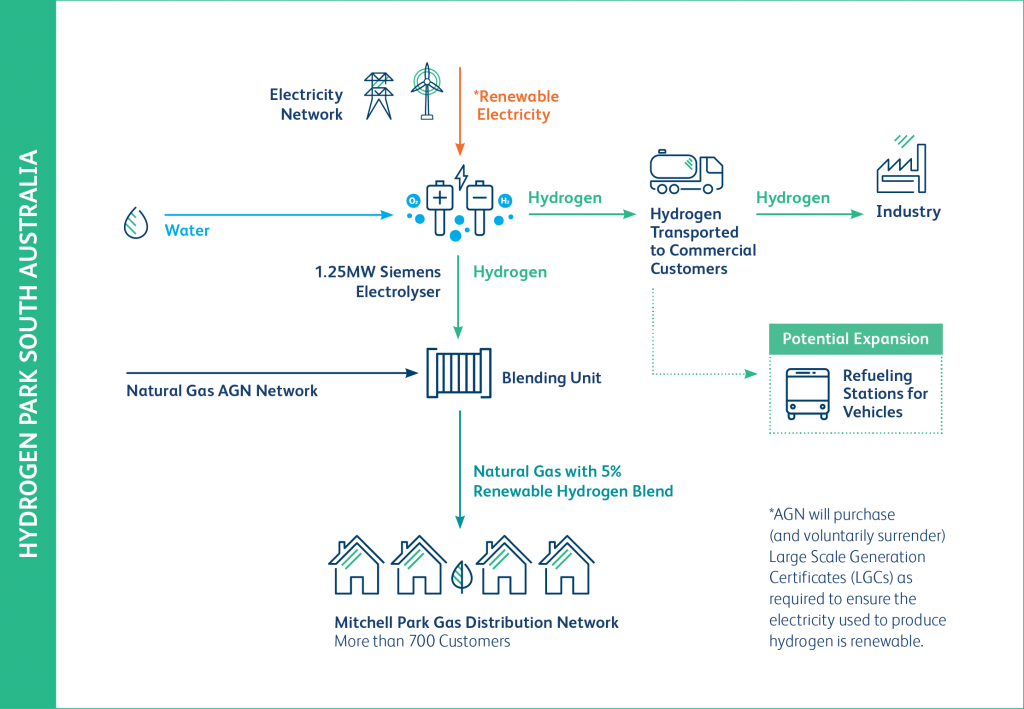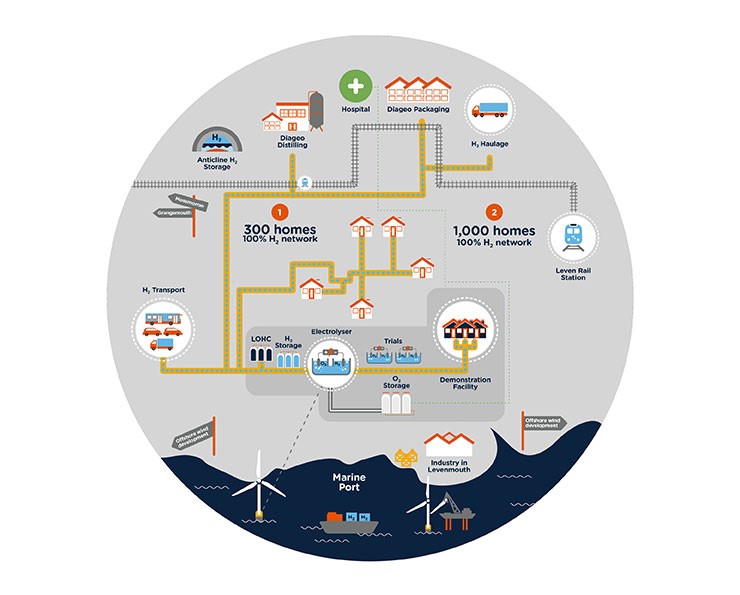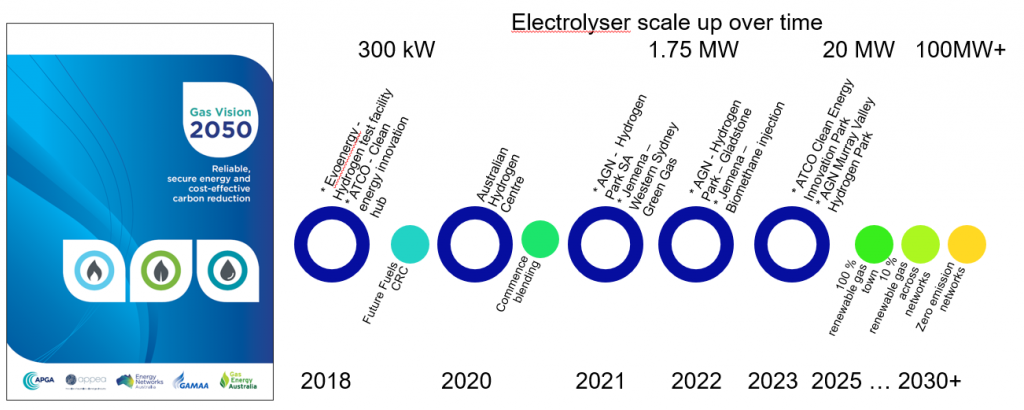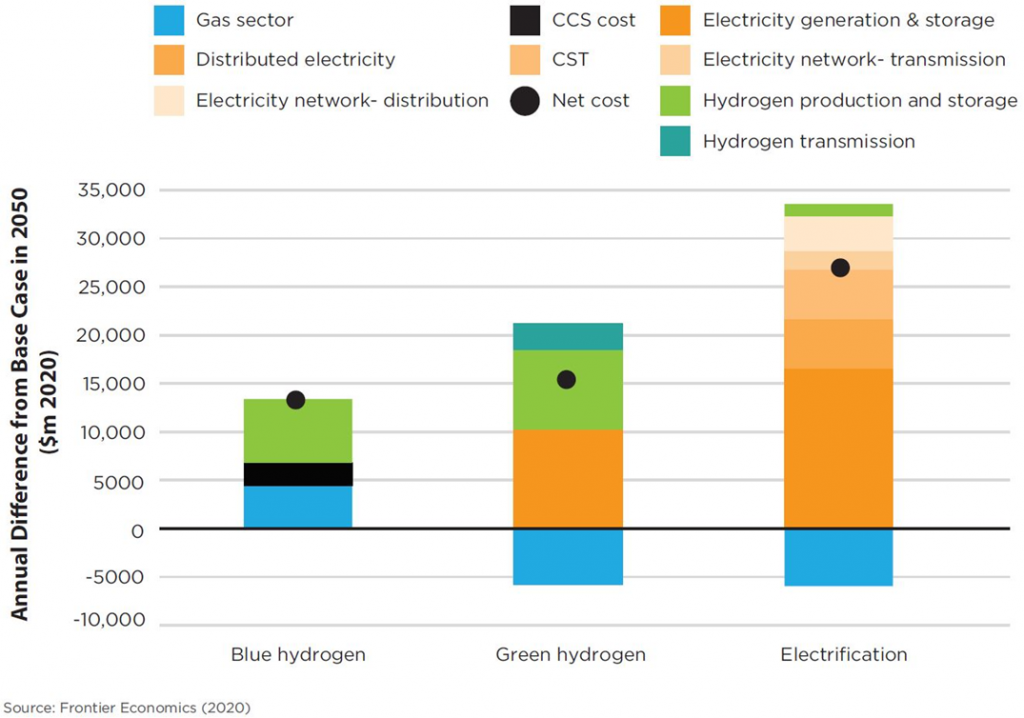Hydrogen: the future’s fuel today
South Australian energy customers will be cooking with green gas from this week, with emissions-free hydrogen supply starting in Adelaide at Australian Gas Networks’ Hydrogen Park SA project. This hydrogen blending initiative demonstrates that hydrogen use in Australia is not some far away fantasy but a reality.
Australia is on a pathway to decarbonise its gas sector to help meet our nation’s emission reduction commitments under the Paris Agreement on climate change.
Industry led, Gas Vision 2050 outlines this roadmap and highlights the important role hydrogen will play in a zero-emissions future.
A key part of this journey is to demonstrate the role of hydrogen for homes, businesses and industry. The logical steps are to start with renewable gas blends in networks, then to demonstrate 100 per cent renewable gas in dedicated towns or regions and ultimately to convert all existing networks to 100 per cent renewable gas.
The Hydrogen Park – South Australia (HyP SA) project started blending five per cent hydrogen into the residential gas network at Tonsley Park, Adelaide, SA on Wednesday 20 May 2021. While there are some projects still in the planning stage and some renewable hydrogen production projects in Australia, this major step is demonstrating the supply of renewable hydrogen to 700 homes. The project has started with blending into the network and subsequent stages may include providing hydrogen to industry or for refueling hydrogen vehicles.
HyP SA project (source: https://www.australiangasnetworks.com.au/hyp-sa)
There are global examples of blending renewable gases such as biomethane and hydrogen into the gas grid. Demonstrations of up to 20 per cent hydrogen have been successfully carried out in France and the UK. A demonstration of 100 per cent in the Scottish town of Levenmouth will show how renewable hydrogen and hydrogen appliances can be used to provide heating services to homes. The project will connect 300 homes in 2022 for four years before a broader roll out of hydrogen in the UK.
Fife 100 project in Levenmouth, Scotland (source: https://www.sgn.co.uk/H100Fife)
The Australian projects build on this international experience and address local issues such as different operating pressures of the gas network, different energy content of the natural gas and different appliances. Shortly to follow will be more renewable gas projects increasing in scale, application and hydrogen blends. These are important stages to work through to minimise the impacts and disruptions to customers when converting to renewable gas.
Timeline of Australian renewable gas projects in gas networks (Source: Energy Networks Australia)
Converting the gas grid to renewable gas
There are a range of different hydrogen production processes. The cleanest form is to use renewable electricity to produce hydrogen through electrolysis. The energy required in the HyP SA project will be generated by wind and solar power, so the whole process will be renewable.
A few weeks ago, the City of Yarra in Victoria pledged to switch its buildings, including pools and community centres, from natural gas to renewable electricity by 2030. This pledge aims to reduce greenhouse gas emissions. Unfortunately, switching from gas to electricity comes with many challenges and increases the overall cost of reaching zero emissions. Some may tell you that electrical appliances are cheaper than gas, but this generally assumes large grants are provided by government to support the purchase of these electrical alternatives.
Recent regulation-driven electricity price increases in the ACT, off the back of a 133 per cent hike in the Territory’s large-scale feed-in tariff, offer a cautionary tale about an electrification bias. This tariff is designed to deliver the ACT’s 100 per cent renewable energy target and requires the electricity network to pay large-scale wind and solar generators for the power they generate under ACT Government contracts.
Decarbonisation costs (Source: Gas Vision 2050: Delivering a Clean Energy Future, Nov 2020)
The use of renewable gas is a cheaper option that should be on the table. It ensures efficient investment in energy infrastructure, manages seasonal and daily peaks and creates benefits to other sectors such as transport and power generation. Most importantly, many customers prefer to use gas over electricity for cooking and heating. Why deny customer choice when there is a viable alternative?
Policy proposals that aim to lock in an electrification pathway are counterintuitive to reducing emissions, which can be achieved from renewable gas usage.
Networks leading the way
Australia’s gas infrastructure businesses are demonstrating the most economically efficient way to achieve zero emissions by blending renewable gas into networks. Similarly for the electricity sector, the challenge to achieve zero emissions is massive but will be made easier by adopting as many strategies as possible, including energy efficiency, renewable electricity, renewable gas, switching to electric vehicles that either run on batteries or fuel cells and improved land management practices.
Hydrogen is here today, and it has a big role to play for Australia to meet its Paris Agreement on climate change. You could say it is a primary element to do so!





